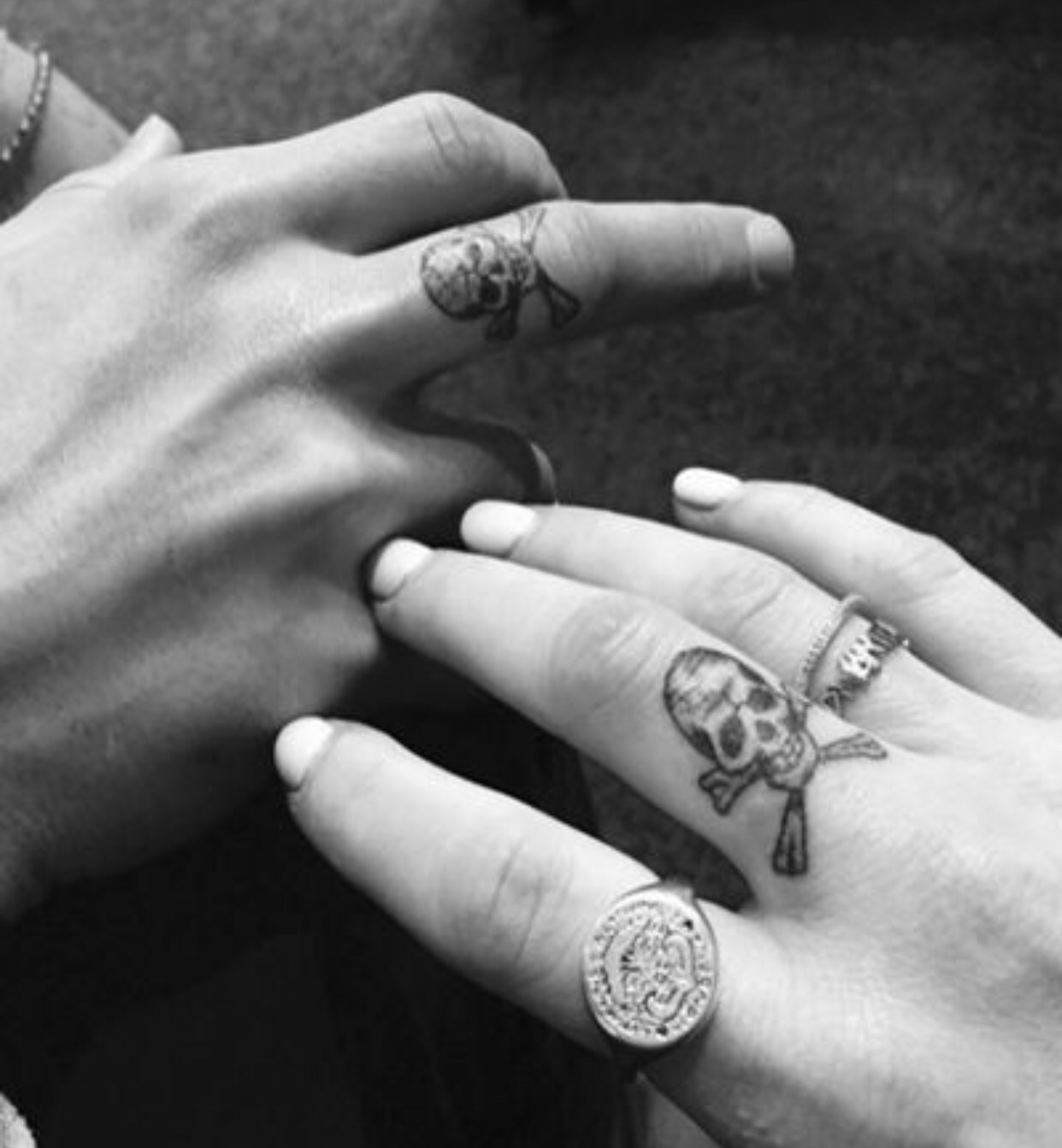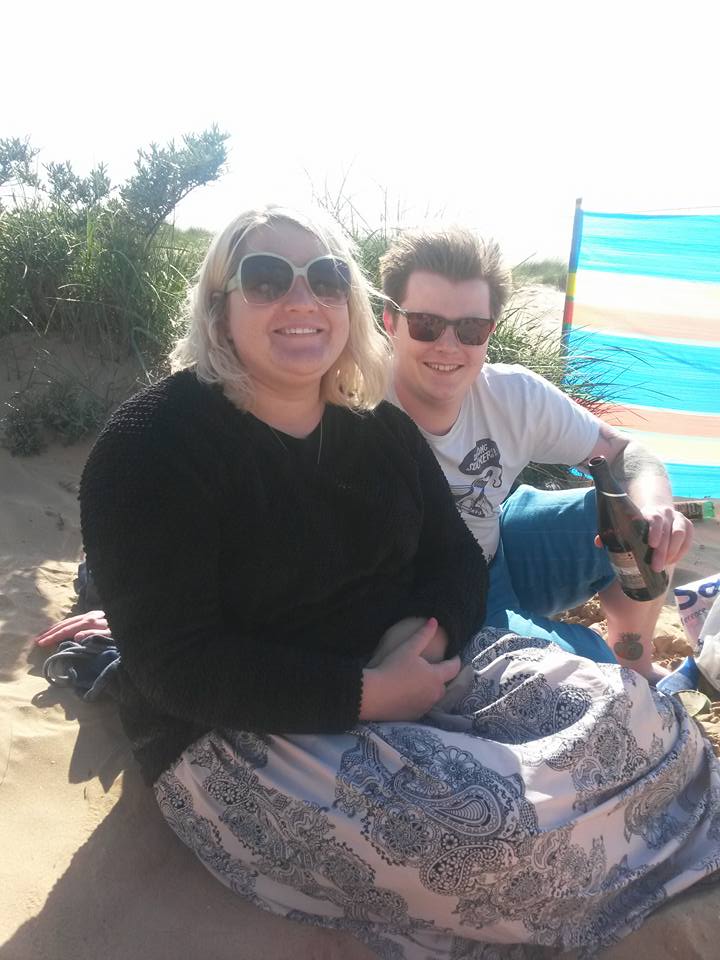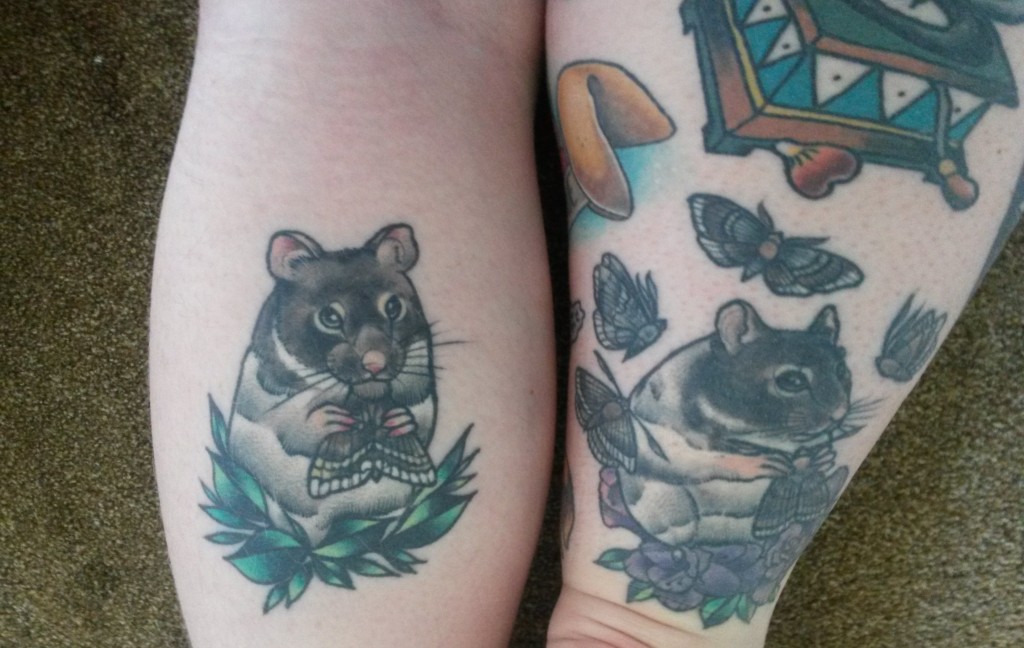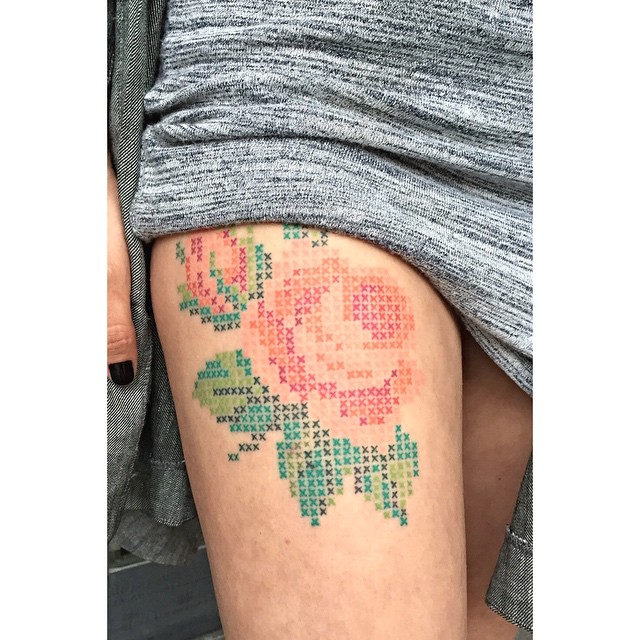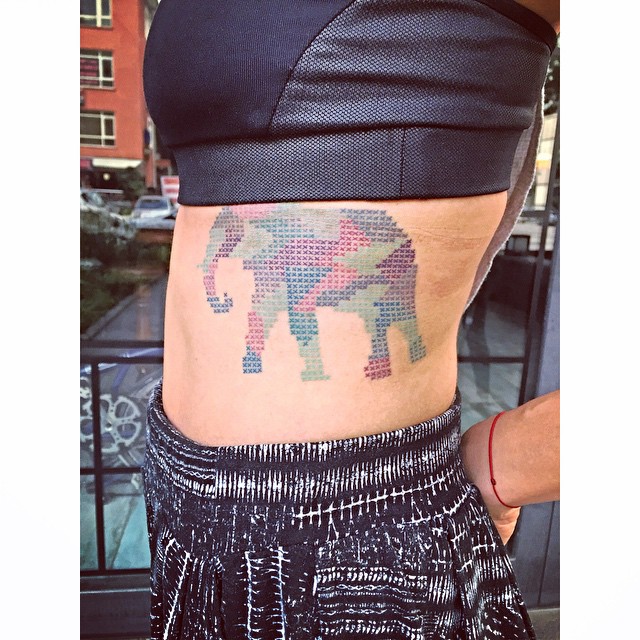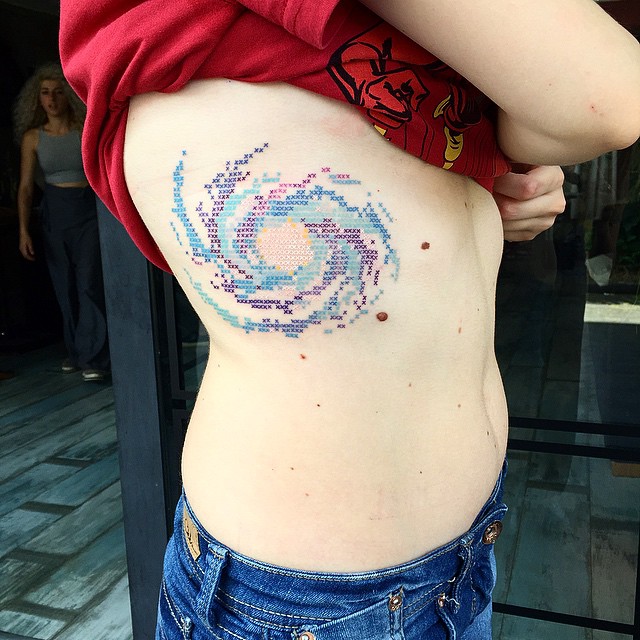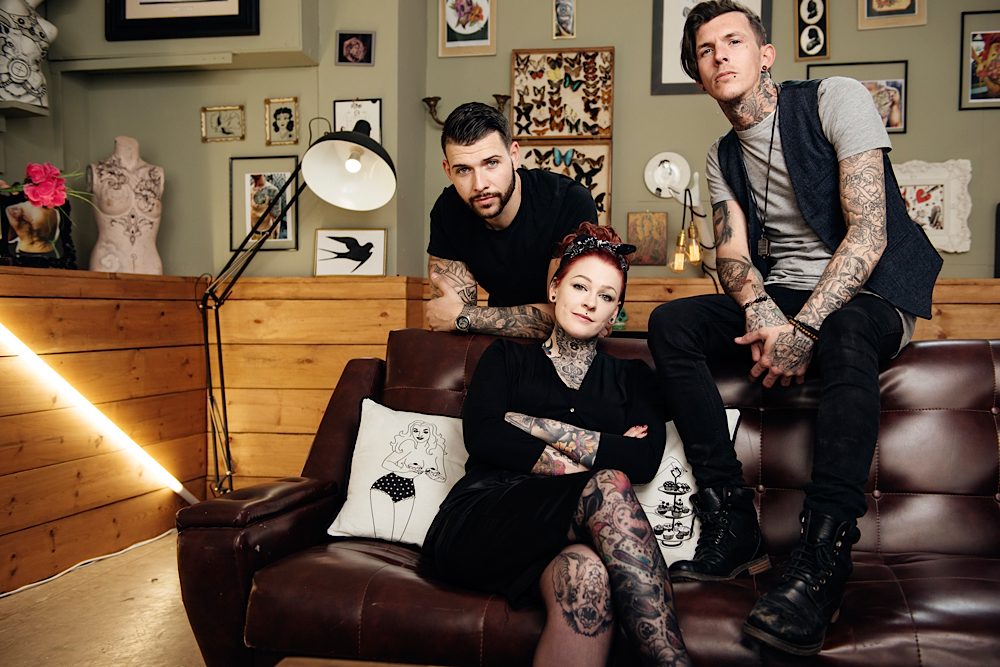Our guest blogger is Natalie McCreesh aka Pearl, a fashion lecturer, freelance writer and creator of Fashion Pearls of Wisdom. This is the first of many posts to appear on th-ink.co.uk, in which she’ll be telling us about her life in tattoos…

I got my first tattoo aged around 16, three four-leaf-clovers circling my outer wrist. A badly executed inking of a pretty little doodle I’d drawn. Aged 32 I decided after living longer with it than without it, the time was right to have it covered up with something that didn’t scream ‘crap teenage tattoo’. The ink was faded and it covered easily with a thick black traditional snake. That was the last of six teenage tattoos to be covered up. From the ages of 16 to 20 I had acquired the odd small tattoo over the years, growing up in the 90s I had earned my tribal and inaccurate Chinese kanji. I couldn’t tell you now what had prompted me to get tattooed back then, to be honest I probably couldn’t give you a reason as to why I get tattooed now. Perhaps it was some kind of rebellion, an attempt at carving out my own identity, a desire to be ‘tough’ and ‘cool’. Neither can I remember anything about the pain, I remember getting all of the tattoos, the shops, the designs chosen but nothing about the pain.
My second tattoo was a tribal-style design in black, green and purple on my lower back, they call them trap-stamps these days, I don’t think they did at the time, if so unbeknownst to me. I got it on holiday in Gran Canaria because a girl in the next hotel room really wanted to get a tattoo but was too scared to go alone. She got something similar on her foot and screamed the place down whilst holding my hand so tight I thought the bones would shatter. I remember leaving a wet bum print on the stool I sat on from my still wet bikini. The design was just a flash off the wall, I wonder how many others got that same tattoo? Do they still have it? Do they still love it? The tattoo ended up raised in scars as I disregarded the tattooist’s advice and went swimming in the pool right after having it done.

My third tattoo was another holiday venture, this time in Aiya Napa, Cyprus. The studio was called Alien Nation and I had walked past it every day for two weeks. On the last day of my holiday the artist was sitting outside sketching tribal designs, I stopped and chatted to him. He altered the design he was working on to fit the curve of my foot. It was beautifully done, sharp and bold. He made me walk home barefoot warning of the damage the strappy wedges I had on would do to my new tattoo
My final tattoos of that time were three clumped together on my right thigh, a string of bad Japanese possibly Chinese, ignorant as I was symbols, a red and orange butterfly and a floral vine. I know that the butterfly and vine were the last but can’t remember where the other came in now. Done by the tattooist who had done my first tattoo, a guy called Buzzard, who I think I had a bit of a crush on due to his tattooed and long haired rough cut image. Nice guy that he was, draw he could not and the tattoos were really only scratcher standard. Patchy, wobbly lined and badly coloured. Did I mention the inaccuracy of the characters? I found that out thanks to the guy down the local take-away. It was meant to spell out my name, but in fact said nothing of any sense – I later would tell people it said ‘Won Ton Soup’.
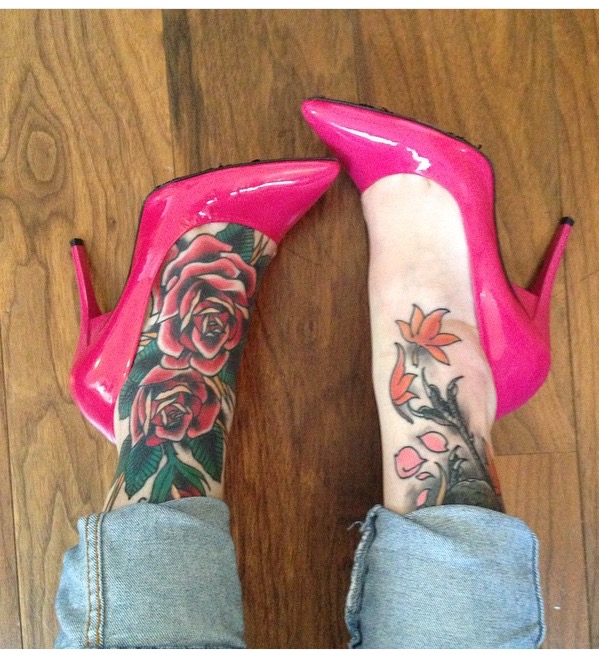
Roses on foot by Kelly Smith
Anyway the butterfly and vine was another sketch I had drawn myself, again I was disappointed at the badly tattooed result. Yet I lacked the knowledge of how and where to get better tattoos from. As I entered my twenties the tattoos stayed with me, but my desire to seek out more faded. Tattoos were expensive and as a student clothes became my only luxury purchase. I never really thought about my tattoos, every now and again I might get asked about them but that was that. They didn’t bother me, they were just there.
A good while after university I found myself living in Sheffield, to me there seemed to be a new tattoo culture emerging, one where tattoos were pieces of art not small marks collected here and there. I came across some old books on Japanese tattooing and the historical tattooed ladies which captured my imagination and were the first prompt in me deciding to go and get tattooed once more. At first my sole desire was to have the bad Chinese (as it turned out) writing covered up, being surrounded by a lot more international students had made me slightly paranoid about it. The artist I had in mind was booked solid for a whole year, so I left my deposit and embarked on a series of laser removal to fade the tattoos on my thigh before the cover-up started.
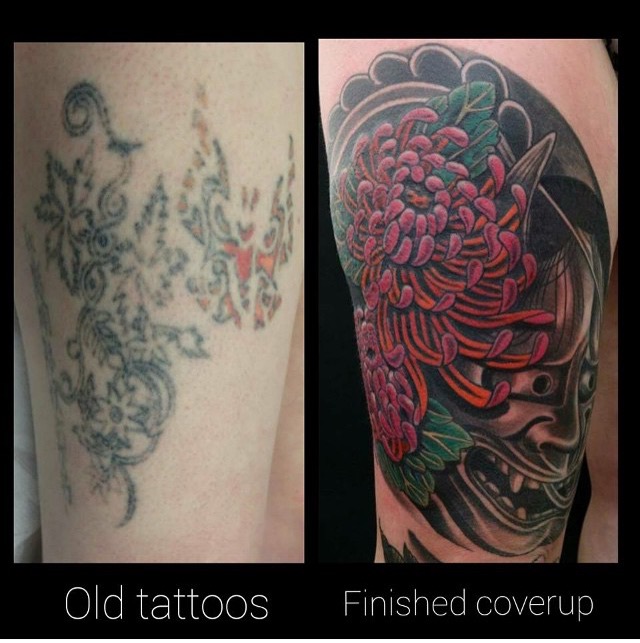
Cover up by Paul Goss
I wonder now had I not had to wait for this tattoo would I still have ended up with 50% of my body covered in ink. If I could have had that tattoo right away would that have quashed my desire? Or would I still have been compelled to gain more – most likely. Either way during this time I scoured books, magazines and compiled online searched. Researching styles of tattooing, different artists and the history and meaning behind tattoo symbology. During my waiting time I decided to treat myself to just one more tattoo – at this stage I was still in the mind-set that I would only ever have discrete tattoos. I ended up with a huge Sailor Jerry style wolf head and rose on the back of my left thigh. This was the start of me getting four traditional tattoos by the same artist around that thigh. I can’t tell you when or how exactly my attitude to tattooing and tattooed women changed during that time, but my next stage was to embark on a full Japanese style back piece. I fell in love with the idea of having this vast amount of work invisible to everyone but those I chose to reveal it to.
